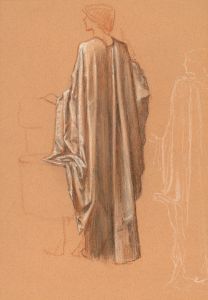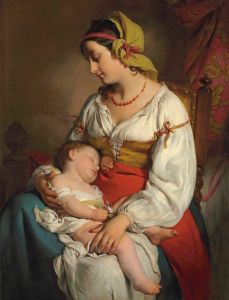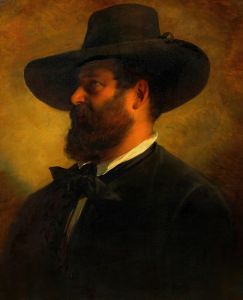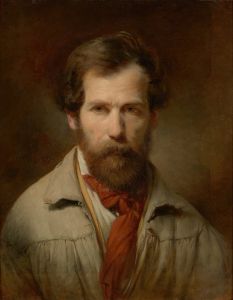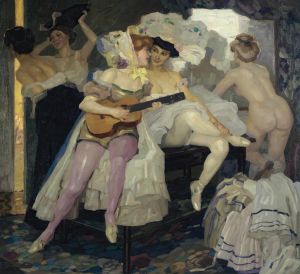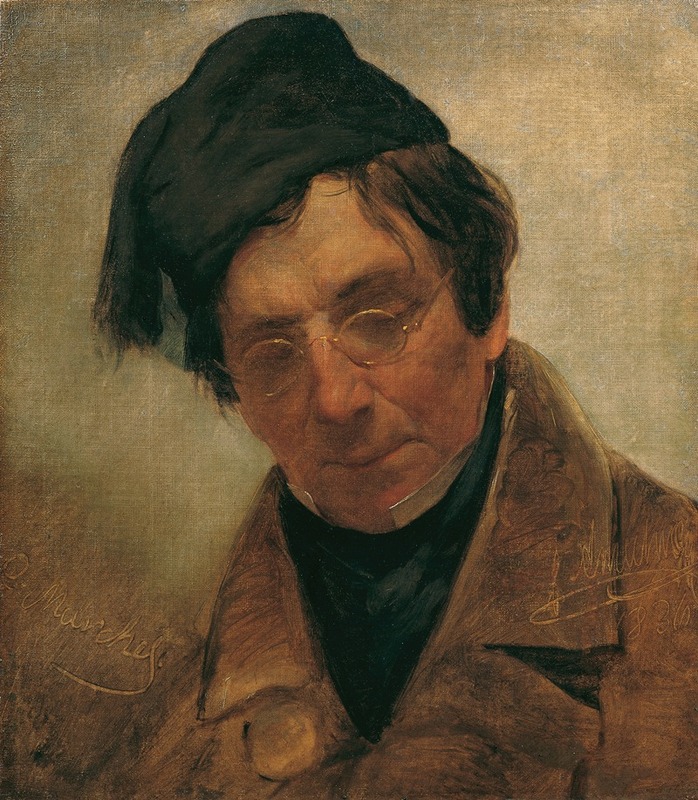
Der Bildhauer Pompeo Marchesi
A hand-painted replica of Friedrich von Amerling’s masterpiece Der Bildhauer Pompeo Marchesi, meticulously crafted by professional artists to capture the true essence of the original. Each piece is created with museum-quality canvas and rare mineral pigments, carefully painted by experienced artists with delicate brushstrokes and rich, layered colors to perfectly recreate the texture of the original artwork. Unlike machine-printed reproductions, this hand-painted version brings the painting to life, infused with the artist’s emotions and skill in every stroke. Whether for personal collection or home decoration, it instantly elevates the artistic atmosphere of any space.
Friedrich von Amerling, an Austrian portrait painter of the 19th century, is known for his detailed and expressive portraits. One of his notable works is "Der Bildhauer Pompeo Marchesi," which translates to "The Sculptor Pompeo Marchesi." This painting is a portrait of the Italian sculptor Pompeo Marchesi, who was a prominent figure in the neoclassical art movement.
Friedrich von Amerling was born in Vienna in 1803 and became one of the leading portrait painters of his time. He studied at the Academy of Fine Arts in Vienna and later in Prague, before continuing his education in London and Paris. Amerling was influenced by the works of Sir Thomas Lawrence and other contemporary portraitists, which is evident in his refined style and attention to detail.
Pompeo Marchesi, the subject of this portrait, was born in 1783 in Saltrio, Italy. He was a distinguished sculptor known for his works in the neoclassical style, which was characterized by its inspiration from the art and culture of ancient Greece and Rome. Marchesi studied under the renowned sculptor Antonio Canova and became a professor at the Brera Academy in Milan. His works include numerous public monuments and sculptures that are celebrated for their classical beauty and technical precision.
The painting "Der Bildhauer Pompeo Marchesi" captures Marchesi in a moment of contemplation, reflecting Amerling's skill in portraying not just the physical likeness of his subjects, but also their character and inner life. Amerling's use of light and shadow, combined with his meticulous attention to detail, brings a sense of realism and depth to the portrait. The painting is a testament to Amerling's ability to convey the personality and status of his sitters, a quality that made him a sought-after portraitist among the European aristocracy and intellectual elite.
Amerling's portraits are known for their clarity and elegance, often featuring his subjects in a dignified and serene manner. In "Der Bildhauer Pompeo Marchesi," these qualities are evident in the way Marchesi is depicted, highlighting his stature as a respected artist of his time. The portrait not only serves as a representation of Marchesi but also as a reflection of the cultural and artistic milieu of the 19th century.
Throughout his career, Friedrich von Amerling painted numerous portraits of notable figures, including members of the Austrian imperial family and other European nobility. His works are part of major art collections and museums, including the Kunsthistorisches Museum in Vienna, which houses a significant number of his paintings.
"Der Bildhauer Pompeo Marchesi" is an important piece within Amerling's oeuvre, illustrating his mastery of portraiture and his ability to capture the essence of his subjects. The painting remains a valuable historical document, offering insight into the lives and personalities of influential figures in the art world of the 19th century. Amerling's legacy as a portraitist endures, with his works continuing to be appreciated for their artistic merit and historical significance.





